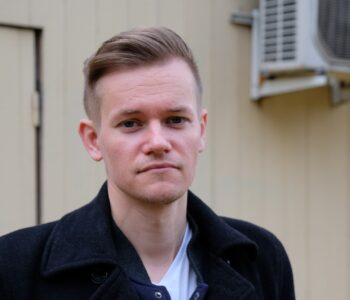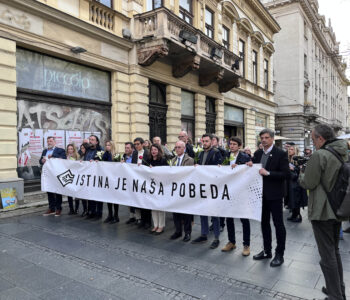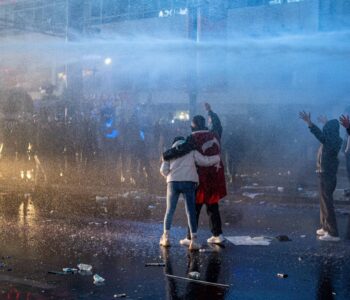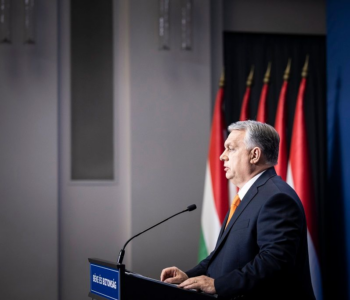
Feindbild Journalist 7: Berufsrisiko Nähe
After setting two negative records in a row, the number of attacks on media professionals in Germany fell in 2022. The European Centre for Press and Media Freedom (ECPMF) recorded 56 assaults throughout the year; 27 fewer than in 2021.
After setting two negative records in a row, the number of attacks on media professionals in Germany fell in 2022. The European Centre for Press and Media Freedom (ECPMF) recorded 56 assaults throughout the year; 27 fewer than in 2021.
According to the analysis of the researchers, the decline in attacks is largely due to the marginalisation of the lateral thinking movement protests. In the previous year, the largest proportion of assaults (77 percent) had taken place around demonstrations against COVID-19 measures. In 2022, that proportion dropped to 48 percent. However, the decline cannot be read as an indication that the security situation is easing. At 56 verified attacks, the attacks are four times that of the pre-pandemic level of 2019, when there were 14 attacks.
Outrage movements such as lateral thinking or previously Pegida are catalysts of press hostility. How high the number of attacked journalists in Germany is, depends largely on the mobilisation ability of these protestors. Hatred of the press serves them as an ideological clasp to keep their heterogeneous followers together,” says Martin Hoffmann, co-author of the study.
In a comparison of the German states, Saxony recorded the most assaults with eleven cases. This is the fifth time since 2015 that the Free State has recorded the most annual assaults. In 2022, Berlin followed with nine registered assaults. Bavaria and Thuringia had eight each. An increased spread of assaults to the western German states, which was first observed in 2021, did not continue last year, according to the ECPMF analysis.
Focus on local journalism: When proximity becomes a security problem
Compared to the previous year, the number of physical attacks on local journalists increased threefold. A total of twelve physical attacks were verified; in the previous year, four local media professionals were affected. According to the analysis, local media workers are exposed to a particular threat because they cannot disappear into anonymity like their colleagues in larger cities. In some cases, anti-press citizens demonstrated directly in front of editorial offices or tried to intimidate journalists in front of their private homes.
The ‘lying press’ accusations that have persisted for years have led to the current level of threats. We heard in many interviews that media professionals take security precautions when reporting on demos or that they avoid potentially dangerous situations altogether,” says Annkathrin Pohl, co-author of the study. “What is frightening to note, however, is that for some, the hostility has not only changed the way they work, but their own attitude toward the job: from what used to be their dream job to the ‘shittiest job’.
Focus on countermeasures
Journalists, associations, and media companies, as well as many state institutions, have now developed countermeasures. The initiative of some interior ministries is a positive development. In Saxony and several other German states, increasingly comprehensive media protection concepts are being implemented to better protect media professionals from attacks at gatherings. In addition, public broadcasters in particular, as well as larger private media companies, have taken a whole range of protective measures for their employees, such as escorts, de-escalation seminars, or legal support services. However, Jessica Jana Dutz, co-author of the study, still sees many gaps:
Freelance journalists in particular are still not adequately protected in Germany. There are too few low-threshold, low-cost offers of protection for them. Journalists’ unions and initiatives are trying to fill this gap but even they have limited resources and cannot reach everyone.











